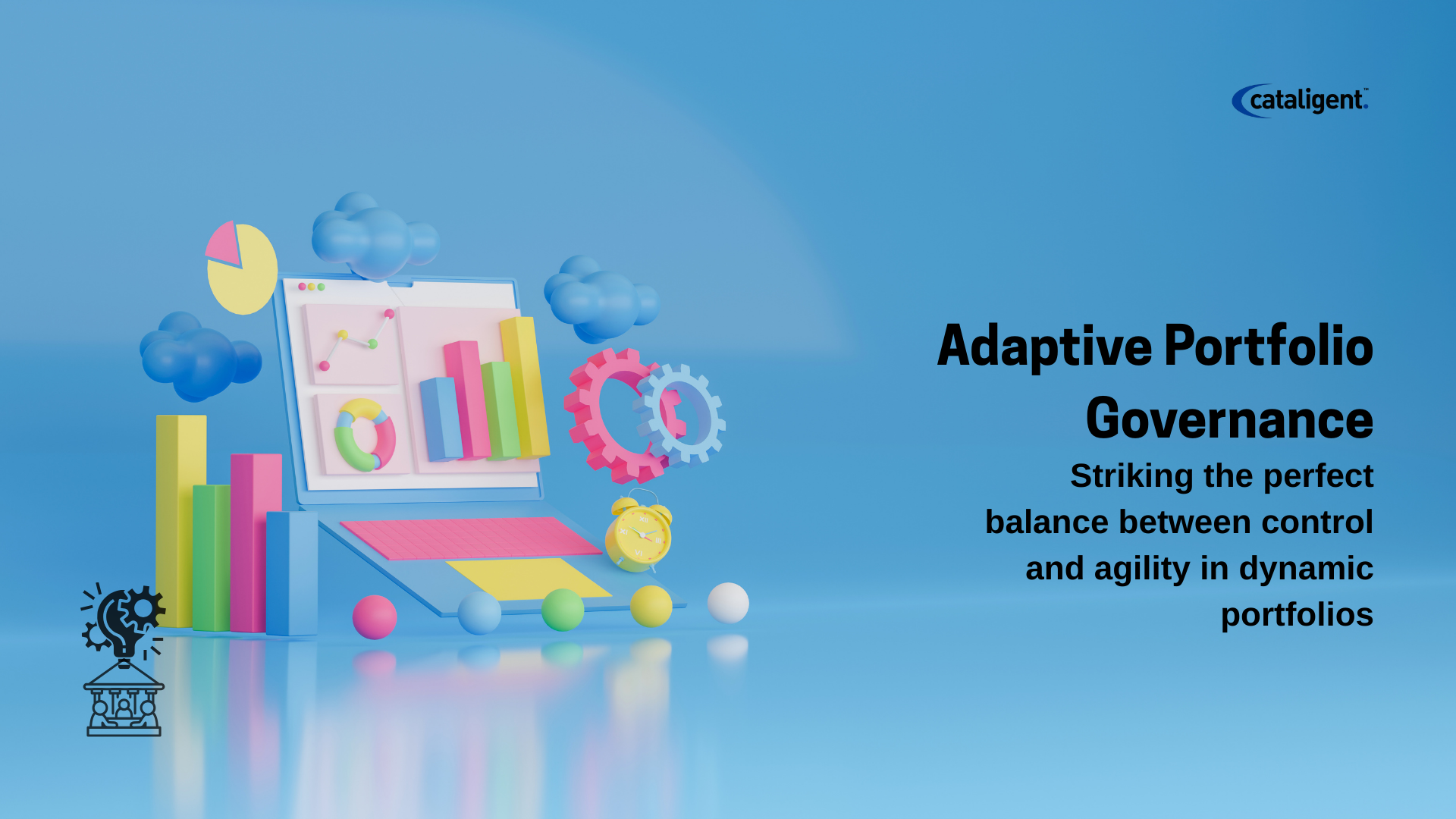The traditional idea of portfolio governance often leans toward strict oversight, rigid approvals, and heavy documentation. While this provides control, it can easily slow down innovation and agility—two qualities businesses urgently need to remain competitive. The challenge for modern organizations is not whether to choose control or agility, but how to balance both in a way that projects deliver strategic outcomes without being suffocated by bureaucracy.
This is where the idea of Adaptive Portfolio Governance comes in. Instead of a one-size-fits-all approach, governance evolves to match the pace, complexity, and importance of each project within the portfolio. This ensures oversight where it’s necessary while leaving room for speed and flexibility when opportunities demand it.
What is Adaptive Portfolio Governance?
Adaptive Portfolio Governance is a flexible framework for managing multiple projects, balancing strategic alignment, risk management, and innovation speed. It treats governance as a spectrum—not an absolute—where the intensity of oversight is adjusted depending on project risk, value, and maturity.
Unlike rigid governance models, adaptive governance enables businesses to:
- Scale governance intensity based on project size and complexity.
- Empower project teams with decision-making autonomy.
- Ensure portfolio alignment with overall business strategy.
- Use real-time portfolio analytics to adapt governance dynamically.
This shift transforms governance from being a bottleneck into a driver of execution speed and accountability.
Why Businesses Need Adaptive Portfolio Governance
1. Rising Complexity of Portfolios
Organizations today manage not just projects but interconnected portfolios involving technology, digital transformation, operations, and compliance. Without adaptive governance, oversight becomes overwhelming, leading to delays, cost overruns, and lost opportunities.
2. The Agility Imperative
Markets change rapidly, and businesses can’t afford to wait months for project approvals. Adaptive governance ensures agility by streamlining approvals for low-risk projects while retaining rigorous oversight for critical ones.
3. Strategic Alignment Pressure
Boards and executives increasingly demand that every project directly contributes to business goals. Adaptive governance uses KPI/OKR tracking, planned vs. actual reporting, and organization-level aggregation to show clear linkage between investments and outcomes.
4. Regulatory & Risk Landscape
Risk is no longer just financial—it includes cybersecurity, compliance, ESG, and operational resilience. Adaptive governance ensures that risk management is embedded in governance checkpoints rather than treated as an afterthought.
5. Demand for Real-Time Insights
Executives expect real-time dashboards, not quarterly updates. Adaptive governance leverages real-time portfolio management tools that transform reporting into decision-making intelligence.
How Adaptive Portfolio Governance Works
Adaptive Portfolio Governance requires a structured yet flexible approach. Here are the core components:
1. Tiered Governance Models
Projects are classified into tiers (e.g., strategic, tactical, experimental), each with different levels of governance. Strategic, high-investment projects may require phase-gate reviews, whereas smaller initiatives may be managed through streamlined approvals.
2. Embedded Risk Evaluation
Risk assessments are integrated into every phase, not just at the beginning. Projects with higher risk profiles automatically attract more governance oversight, while lower-risk ones move forward faster.
3. Real-Time Portfolio Analytics
Dashboards provide insights into resource planning, financial variances, and capacity utilization. This allows governance intensity to shift as conditions evolve, ensuring timely intervention.
4. Agile Decision Points
Governance is treated as decision points rather than static approvals. At each phase, leaders evaluate not only compliance but also strategic value contribution. Projects that fail to deliver alignment are adjusted or stopped.
5. Cross-Portfolio Alignment
Adaptive governance ensures that dependencies between projects are visible, risks are mapped across portfolios, and resources are allocated to maximize overall impact.
6. Integration with Strategic Metrics
Governance is linked with KPI/OKR frameworks, ensuring performance metrics flow directly into board-level decision-making.
Practical Applications of Adaptive Portfolio Governance
- Multi-Project Organizations – Large enterprises managing dozens of initiatives can avoid resource conflicts and ensure that high-value projects receive the right focus.
- Digital Transformation Programs – Rapidly evolving digital initiatives often require flexibility; adaptive governance ensures oversight without slowing transformation speed.
- Risk-Sensitive Industries – Banking, pharmaceuticals, and energy firms need rigorous controls; adaptive governance ensures compliance without paralyzing progress.
- Agile/Hybrid Environments – Where organizations blend agile sprints with traditional projects, adaptive governance aligns methodologies into a unified portfolio approach.
How Cataligent Helps
Cataligent takes the complexity out of governance and turns it into a competitive advantage. With the CAT4 platform, businesses gain a powerful toolkit for multi-project management, real-time portfolio visibility, and risk-aware decision-making. Instead of forcing teams into rigid structures, CAT4 adapts governance to the reality of each project—ensuring that agility and control work hand in hand. By connecting resource intelligence, KPI/OKR tracking, and secure integrations, Cataligent helps leadership stay focused on outcomes while giving project teams the autonomy to move fast. The result is a governance model that doesn’t just monitor progress—it actively accelerates transformation.

